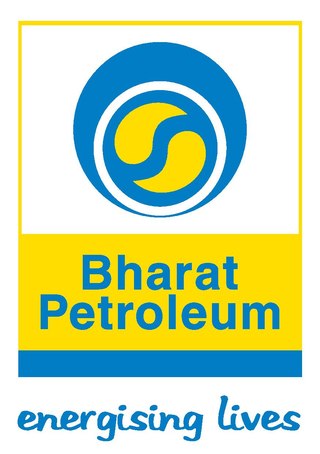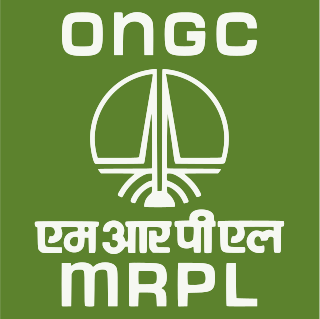
Bharat Sanchar Nigam Limited(abbreviated as BSNL) is a state-owned telecommunications company, based in India, owned by the Government of India. It operates as a central public sector undertaking with its headquarters in New Delhi, India. BSNL falls under the jurisdiction of the Department of Telecommunications, which is part of the Ministry of Communications, Government of India. The company was established on 1 October 2000 by the Government of India. BSNL provides mobile voice and internet services through its nationwide telecommunications network across India. It is the largest government-owned-wireless telecommunications service provider in India. In 2022, BSNL reported a loss of Rs 57,671 crore since inception.In the financial year 2022-23 it incurred a loss of Rs 6,662 crore.

The Bharatiya Mazdoor Sangh is a trade union in India. It was founded by Dattopant Thengadi on 23 July 1955.

Coal India Limited (CIL) is an Indian central public sector undertaking under the ownership of the Ministry of Coal, Government of India. It is headquartered at Kolkata. It is the largest government-owned-coal-producer in the world. It is also the ninth largest employer in India with nearly 272,000 employees.
Pradip Baijal is an officer of the Indian Administrative Service (IAS) who retired as the chief of the Telecom Regulatory Authority of India (TRAI).

The Oil and Natural Gas Corporation Limited (ONGC) is an Indian central public sector undertaking under the ownership of Ministry of Petroleum and Natural Gas, Government of India. The company is headquartered in Delhi. ONGC was founded on 14 August 1956 by the Government of India. It is the largest government-owned-oil and gas explorer and producer in the country and produces around 70 percent of India's domestic production of crude oil and around 84 percent of natural gas. ONGC is vertically integrated across the entire oil and gas industry. In November 2010, the Government of India conferred the Maharatna status to ONGC.

Bharat Petroleum Corporation Limited (BPCL) is an Indian public sector undertaking (PSU) under the ownership of the Ministry of Petroleum and Natural Gas, Government of India. It operates three refineries in Bina, Kochi and Mumbai. BPCL is India's second-largest government-owned downstream oil producer, whose operations are overseen by the Ministry of Petroleum and Natural Gas. BPCL was ranked 309th on the Fortune list of the world's biggest PSUs in 2020, and 1052nd on Forbes's "Global 2000" list in 2023.

Hindustan Petroleum Corporation Limited (HPCL) is an Indian public sector undertaking in petroleum and natural gas industry, headquartered in Mumbai, and a subsidiary of the Oil and Natural Gas Corporation (ONGC), which is owned by the Ministry of Petroleum and Natural Gas, Government of India.

The Ministry of Petroleum and Natural Gas (MOP&NG) is a ministry of the government of India responsible for the exploration, production, refining, distribution, marketing, import, export, and conservation of petroleum, natural gas, petroleum products, and liquefied natural gas in the country. The ministry is headed by the Cabinet Minister Hardeep Singh Puri. M. M. Kutty is the Secretary of the Ministry. Dharmedndra Pradhan serving as the minister from 26 May 2014 to 7 July 2021 is the longest serving minister till date.

The Ministry of Finance is a ministry within the Government of India concerned with the economy of India, serving as the Treasury of India. In particular, it concerns itself with taxation, financial legislation, financial institutions, capital markets, centre and state finances, and the Union Budget.

Bharat Pumps & Compressors Limited (BPC) is a central public sector undertaking under the ownership of Ministry of Heavy Industries, Government of India. The psu manufactures Reciprocating pumps, Centrifugal pumps, Reciprocating compressors, and high pressure seamless Gas cylinders. Headquarters in Allahabad.

Mangalore Refinery and Petrochemicals Limited (MRPL), is a division of Oil and Natural Gas Corporation (ONGC) which is under the ownership of the Ministry of Petroleum and Natural Gas of the Government of India. Established in 1988, the refinery is located at Katipalla, north from the centre of Mangalore. The refinery was established after displacing five villages, namely, Bala, Kalavar, Kuthetoor, Katipalla, and Adyapadi.
Centre for Excellence in Telecom Technology and Management (CETTM) located in Hiranandani Gardens, Powai, Mumbai is the telecom training centre of MTNL, the incumbent operator of Government of India (GOI). It was founded in 2003 as one of the largest telecom training centres in India and amongst the biggest in Asia. The Centre provides extensive training to corporate employees, students, and MTNL's internal employees in telecom switching, transmission, wireless communication, telecom operations and management.

Public sector undertakings in Kerala are of two types, public sector units in which majority shares are owned by Union Government and public sector units in which majority shares are owned by State Government. Public sector undertakings in Kerala, i.e. enterprises in which majority shareholder is Government of Kerala are generally divided into Manufacturing & Non-Manufacturing. Some of the PSUs such as Kinfra, KSIDC, SIDCO etc. are promotional agencies. As of 2004 there were 104 enterprises spread over 14 different sectors of Kerala economy. These sectors are as varied as engineering, electronics to wood products & welfare agencies. Eleven units are joint venture of Kerala government with the central government. Most of state PSUs units are under Department of Industries & Commerce.
The Directorate General of Hydrocarbon (DGH) is the Indian governmental regulatory body under the Ministry of Petroleum and Natural Gas.

NBCC (India) Limited, formerly known as National Buildings Construction Corporation is a public sector undertaking (PSU) company under the Ministry of Housing and Urban Affairs, Government of India.
Public Sector Undertakings (PSU) or Public Sector Enterprises (PSE) in India are government-owned enterprises in which 51 percent or more share capital is held by the Government of India or state governments or joint ventures between multiple Public Sector Enterprises. Depending on the level of government ownership, they can be broadly categorised as Central PSUs or State PSUs. These entities include government companies, statutory corporations, banking institutions, and departmentally run companies. PSUs are officially classified into three categories, which are Central Public Sector Enterprises (CPSE) and Public Sector Banks (PSB) owned by the central government or other CPSEs/PSBs, and State Level Public Enterprises (SLPE) owned by state governments or other SLPEs. CPSE is further classified into Strategic Sector and Non-Strategic Sector. Depending on their financial performance and progress, CPSEs are granted the status of Maharatna, Navaratna, and Miniratna.
The Committee on Public Undertakings (COPU) is one of three financial standing committees within the Parliament of India, composed of selected members of Parliament with the stated purpose of examining the reports and accounts of public sector undertakings (PSUs). The duties and responsibilities of the COPU are specified in the Fourth Schedule of the Rules of Procedure and Conduct of Business in Lok Sabha. This committee, alongside the Public Accounts Committee (PAC) and the Estimates Committee (EC), are the three financial standing committees of the Parliament of India.
Disinvestment in India is a policy of the Government of India, wherein the Government liquidates its assets in the Public sector Enterprises partially or fully. The decision to disinvest is mainly to reduce the fiscal burden and bridge the revenue shortfall of the government. The key engine in achieving growth in India during post-independence was played by Public Sector Enterprises (PSE). Among other responsibilities of PSE's post-independence, the social and developmental obligations of the nation were most important, which resulted in these units escaping competitive race. Later on the activities of the PSU's were divergent, concentrating towards more non-core areas like hotels and consumer goods among others. Further, the public enterprises were used as tools for political and bureaucratic manipulation; which was consequential in low capacity utilization, reduced productivity, failure to innovate, and complex decision-making processes on vital issues of development.
Atanu Chakraborty is currently the chairperson of HDFC Bank, India's largest lender by market capitalization. He was appointed by the Reserve Bank of India in April 2021 on the board of bank. He is a retired 1985 batch officer of the Indian Administrative Service, of the Gujarat cadre, and has served as Economic Affairs Secretary of India till his retirement in April 2020. Chakraborty has also been in the energy sector At the central and state governments, his current role includes the chairmanship of start-up entities in Fintech.











